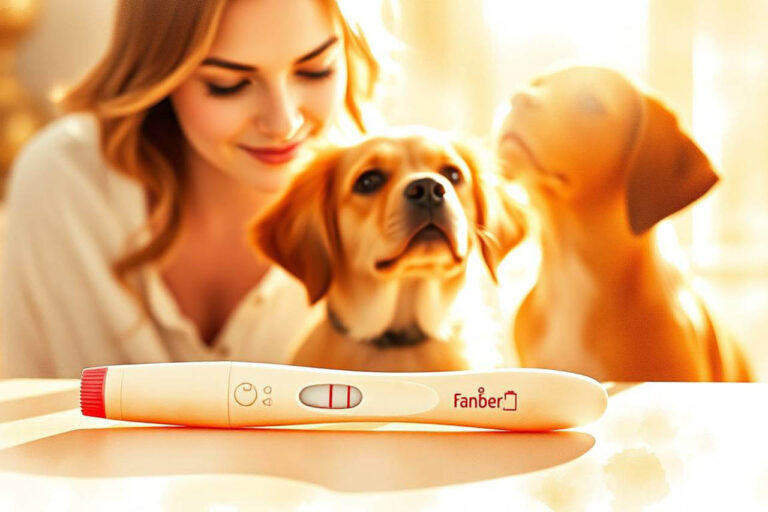Your cart is currently empty!
How to Test for Parvo at Home: A Simple Guide to Lateral Flow Testing

Parvovirus (parvo) is a highly contagious and dangerous disease that primarily affects puppies and unvaccinated dogs. Early detection is critical for improving survival rates. With our modern lateral-flow immunoassay (LFIA) tests, you can now test for parvo at home quickly and accurately.
If you’re wondering, “Can you test for parvo at home?”—the answer is yes! Our A-PET-CARE tests are easy to use, fast, and reliable, making them an excellent option for concerned pet owners or shelters. This guide explains how to test for parvo using our at-home kits and what steps to take if your dog tests positive.
Can You Test for Parvo at Home? Absolutely!
No more rushing to the vet for every suspected parvo case. A-PET-CARE lateral-flow tests (LFIA) let you check for the virus at home with high accuracy—similar to human rapid tests like pregnancy tests.
Why Use A-PET-CARE At-Home Parvo Test?
✔ Fast results (5-10 minutes)
✔ Easy to perform—no special training required
✔ Highly accurate—the parvo test is one of our most reliable, with 99.6% relative accuracy (see specificity/sensitivity table below)
✔ Saves time & money compared to veterinary visits
If your dog shows symptoms like lethargy, vomiting, bloody diarrhea, or loss of appetite, our test can help confirm whether parvo is the cause.
Where Can I Get an At-Home Parvo Test?
You can purchase A-PET-CARE parvo test kits directly from our website.
We offer single parvo tests — A-PET-CARE Parvovirus (Parvo) Ag At-Home Test —for detection of parvovirus antigen only, as well as combination test kits — for detection of Parvovirus in combination with other diseases, like:
- Combo 2-in-1 Test Kits for Parvo and Distemper (CPV+CDV Ag)
- Combo 2-in-1 Test Kits for Parvo and Canine Coronavirus (CPV+CCV Ag)
- Combo 3-in-1 Test Kits for Parvo, Canine Coronavirus and Giardia (CPV+CCV+GIA Ag)
Browse our full selection to find the right test for your needs.

How to Test for Parvo at Home (Step-by-Step)
Our testing process is simple and straightforward:
1. Gather Your Supplies
- A-PET-CARE parvo test kit
- Fresh stool sample (best if collected within 2 hours)
- Gloves (to prevent contamination)
- Timer
2. Prepare the Test
- Open the test kit and place it on a flat surface
- Use the provided swab to collect a small fecal sample
3. Run the Test
- Insert the swab into the test buffer solution
- Mix thoroughly
- Add drops to the test cassette
Follow the included instructions for details.
4. Read Results
- Results appear in 5-10 minutes
- Positive: Two colored lines (even if faint)
- Negative: One control line
- Invalid: No lines or control line missing
5. Next Steps
- Positive result: Contact your vet immediately—parvo requires urgent treatment
- Negative but symptoms persist: Retest in 24 hours or visit your vet
Parvo Test Accuracy and Limitations
A-PET-CARE at-home LFIA tests for parvo match the accuracy of veterinary ELISA tests for early detection. Here is the accuracy table of our parvo tests:
| Test Type | Relative Sensitivity | Relative Specificity | Relative Accuracy |
|---|---|---|---|
| Canine Parvovirus Antigen Test (CPV Ag): | 98.6% | 100% | 99.6% |
However, certain factors can affect results:
Potential for False Negatives in Parvo Testing:
- Old sample (always use fresh stool, collected within 2 hours)
- Early infection (low viral load)
- Improper test procedure
Potential for False Positives in Parvo Testing:
- Recent vaccination (wait 2 weeks before testing)
- Sample contamination
- Expired test kit
- Rare cross-reactions
Final Thoughts
Now that you know how to test for parvo at home, you can act quickly if your dog shows symptoms. While A-PET-CARE One Step lateral-flow tests are convenient and reliable, always consult a veterinarian for confirmation and treatment if your dog tests positive or remains ill.
Disclaimer
This article is for informational purposes only and is not a substitute for professional veterinary advice. Always consult a licensed veterinarian if your dog shows signs of illness. TAKE&TEST and the authors are not responsible for misuse of test kits or treatment decisions based on this information.






